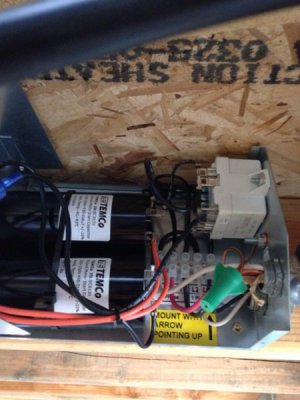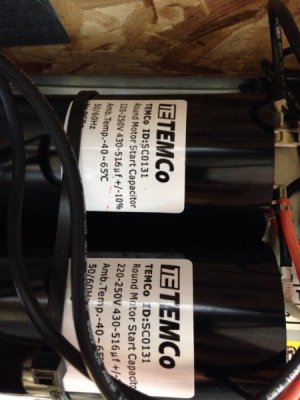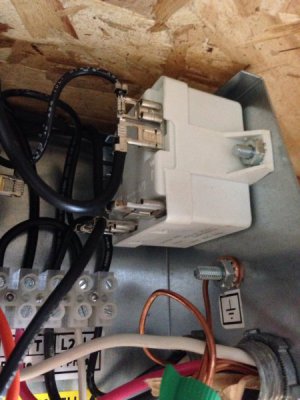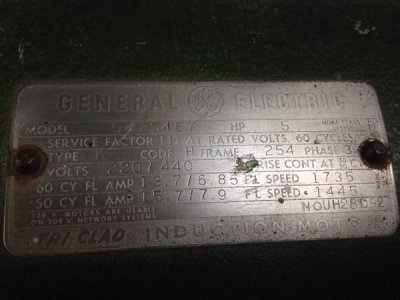- Joined
- Jul 11, 2016
- Messages
- 66
I am new to running 3 phase machines and i have a pieced together RPC that i'd like some input on what people think about it, if its ok, etc?
To start i have a TEMco 4-8hp static phase converter that is supplied by a manual disconnect 30amp 220v single phase circuit from a 100amp sub panel in my garage.
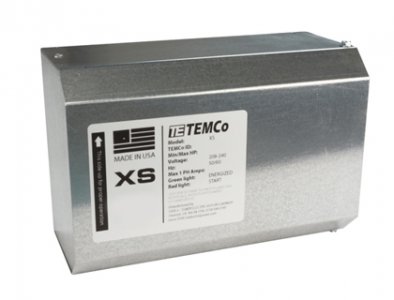
Appears to utilize only one start capacitor and one run capacitor? this is where my electrical knowledge is severely lacking.
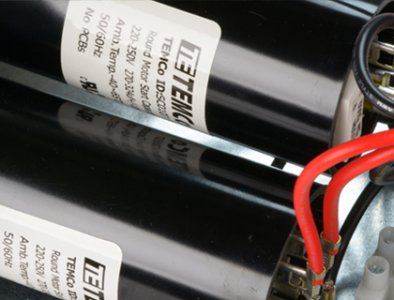
from this static converter I have 4 wires running to a junction box T1.T2.T3 and a ground. from this junction two sets of 4 wires leave with one set going to a idle 5hp 3 phase motor wired for 220v. while the other set of 4 wires run to my mill (Kearney trekker 2CH 5Hp vertical mill) This mill has a transformer on the back that i believe steps up to 440v as the motor came that way originally, and also uses a 110v input to supply a contactor/switch(I'm a car guy and would call this a relay, using lower power to switch on and off a higher power system) with a built in circuit protection.
So when I throw the main 30amp disconnect to fire up the idle motor it starts up immediately and runs smooth(although the little static converter is louder than the 5hp motor itself!)
then when the mill is turned on it spins up immediately too and runs fine. (both idle and mill motor spin in the same and correct direction)
Voltage on the 3 phase side runs at 230v's 230v's 212v-ish unloaded. engage spindle and some power feeds to add a load and my third leg hoovers in the 208v range. too much gap in voltages to my ghost leg? would more or larger run caps even this out? am i doing damage to my 3 phase motor with that kind of voltage difference?
also, are the more expensive static converters or RPC's quieter? or should i just move the converter further away from my work station and add some sound insulation? its pretty loud and obnoxious.
thanks for reading
To start i have a TEMco 4-8hp static phase converter that is supplied by a manual disconnect 30amp 220v single phase circuit from a 100amp sub panel in my garage.

Appears to utilize only one start capacitor and one run capacitor? this is where my electrical knowledge is severely lacking.

from this static converter I have 4 wires running to a junction box T1.T2.T3 and a ground. from this junction two sets of 4 wires leave with one set going to a idle 5hp 3 phase motor wired for 220v. while the other set of 4 wires run to my mill (Kearney trekker 2CH 5Hp vertical mill) This mill has a transformer on the back that i believe steps up to 440v as the motor came that way originally, and also uses a 110v input to supply a contactor/switch(I'm a car guy and would call this a relay, using lower power to switch on and off a higher power system) with a built in circuit protection.
So when I throw the main 30amp disconnect to fire up the idle motor it starts up immediately and runs smooth(although the little static converter is louder than the 5hp motor itself!)
then when the mill is turned on it spins up immediately too and runs fine. (both idle and mill motor spin in the same and correct direction)
Voltage on the 3 phase side runs at 230v's 230v's 212v-ish unloaded. engage spindle and some power feeds to add a load and my third leg hoovers in the 208v range. too much gap in voltages to my ghost leg? would more or larger run caps even this out? am i doing damage to my 3 phase motor with that kind of voltage difference?
also, are the more expensive static converters or RPC's quieter? or should i just move the converter further away from my work station and add some sound insulation? its pretty loud and obnoxious.
thanks for reading


